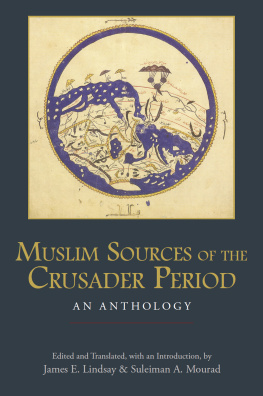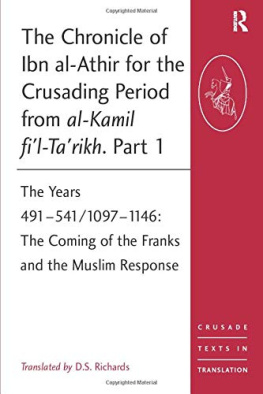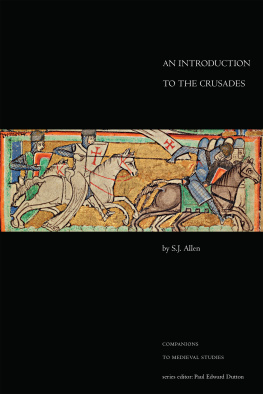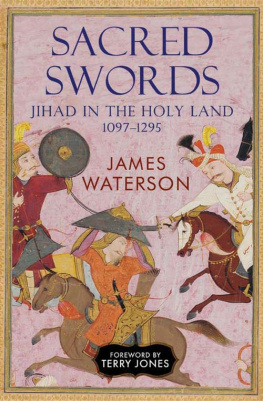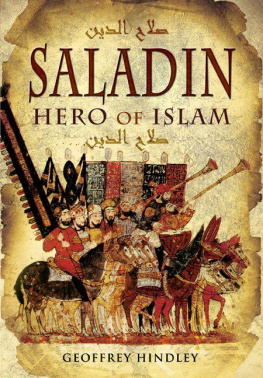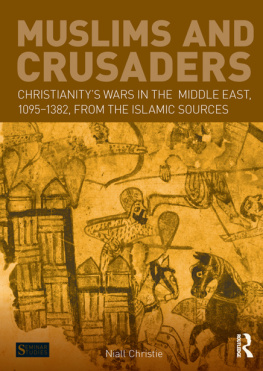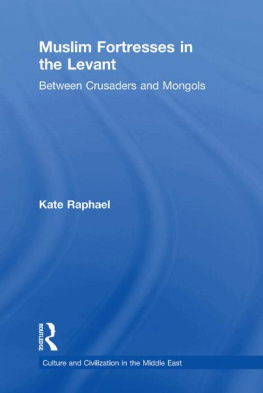
CRUSADE TEXTS IN TRANSLATION
About the volume:
The Chronicle of Ibn al-Athr (1160-1233 AD), entitled al-Kmil fl-tarkh, is one of the outstanding sources for the history of the mediaeval world. It covers the whole sweep of Islamic history almost up to the death of its author and, with the sources available to him, he attempted to embrace the widest geographical spread; events in Iraq, Iran and further East run in counterpoint with those involving North Africa and Spain. From the time of the arrival of the Crusaders in the Levant, their activities and the Muslim response become the focus of the work.
While continuing with the aim of comprehensive coverage, the years in this part are dominated by the careers of Nur al-Din and Saladin, the champions of the Jihad, sometimes called the counter-crusade. Of special interest is the historians partiality for the House of the former and his perceived hostility to Saladin.
About the series:
The crusading movement bequeathed to its future historians a legacy of sources unrivalled in their range and variety. Crusade Texts in Translation presents these sources document in fascinating detail as well as the motivations and viewpoints, military efforts and spiritual lives, of the participants in the crusades. They narrate the internal histories of the states and societies which crusaders established or supported in the many regions where they fought. Some sources have been translated in the past but the vast majority have been available only in their original language. Crusade Texts in Translation provides a wide ranging corpus of texts, most of them translated for the first time, which illuminate the history of the crusades and the crusader-states from every angle, including that of their principal adversaries, the Muslim powers of the Middle East.
About the author:
D.S. Richards retired as Lecturer in Arabic at the Oriental Institute, Oxford, in 2000. He is an Emeritus Fellow of St Cross College, University of Oxford, UK.
Crusade Texts in Translation
Editorial Board
Malcolm Barber (Reading), Peter Edbury (Cardiff),
Bernard Hamilton (Nottingham), Noran Housley (Leicester),
Peter Jackson (Keele)
Titles in the series include:
Colin Imber
The Crusade of Varna, 1443-45
Carol Sweetenham
Robert the Monks History of the First Crusade
Historia Iherosolimitana
Thomas A. Fudge
The Crusade against Heretics in Bohemia, 1418-1437
Sources and Documents for the Hussite Crusades
Helen J. Nicholson
The Chronicle of the Third Crusade The
Itinerarium Peregrinorum et Gesta Regis Ricardi
Bernard S. Bachrach and David S. Bachrach
The Gesta Tancredi of Ralph of Caen
A History of the Normans on the First Crusade
D.S. Richards
The Chronicle of Ibn al-Athr for The Crusading Period from al-Kmil fil-
Tarkh. Part 1
The Years 491-541/1097-1146: The Coming of the Franks and the
Muslim Response
Janet Shirley
The Song of the Cathar Wars
A History of the Albigensian Crusade
Damian Smith and Helena Buffery
The Book of Deeds of James I of Aragon
A Translation of the Medieval Catalan Llibre dels Fets
The Chronicle of Ibn al-Athr
for the Crusading Period
from
al-Kmil fl-tarkh
The Chronicle
of Ibn al-Athr
for
the Crusading Period
from
al-Kmil fl-tarkh
Part 2
The Years 541589/11461193
The Age of Nur al-Din and Saladin
Translated by
D.S. Richards
First published 2007 by Ashgate Publishing
Published 2016 by Routledge
2 Park Square, Milton Park, Abingdon, Oxon OX14 4RN
711 Third Avenue, New York, NY 10017, USA
Routledge is an imprint of the Taylor & Francis Group, an informa business
Copyright 2007 D.S. Richards
D.S. Richards has asserted his right under the Copyright, Designs and Patents Act, 1988, to be identified as the translator of this work.
All rights reserved. No part of this book may be reprinted or reproduced or utilised in any form or by any electronic, mechanical, or other means, now known or hereafter invented, including photocopying and recording, or in any information storage or retrieval system, without permission in writing from the publishers.
Notice:
Product or corporate names may be trademarks or registered trademarks, and are used only for identification and explanation without intent to infringe.
British Library Cataloguing in Publication Data
Ibn al-Athir, Izz al-Din, 11601233
The Chronicle of Ibn al-Athir for the Crusading Period from al-Kamil il-Tarikh
Part 2: The Years 541589/11461193: The Age of Nur al-Din and Saladin. (Crusade Texts in Translation; 15)
1. Crusades Early works to 1800. I. Title II. Richards, D. S. (Donald Sidney), 1935.
940.182
Library of Congress Control Number: 2006926785
ISBN 9780754640783 (hbk)
ISBN 9780754669517 (pbk)
Contents
This volume comprises the second part of a planned three-volume translation of the later parts of al-Kmil fl-tarkh, Ibn al-Athrs major chronicle of Islamic history. The first part of the translation contained the period from the year 491/1097 up to 541/1146. Since these volumes appear in the series Crusader Texts in Translation, it is only reasonable that the divisions imposed on the material should refer to dates that have a relevance for the history of the Crusades. Thus the first part began with the year in which the chronicle first refers to the coming Frankish expedition to the Levant. It ended with the murder of Emir Zank, the Atabeg of Mosul and Aleppo, whose career marked the end of one stage of the Muslim response to the Crusades.
This second part, which is now offered, has an even greater inner consistency from the viewpoint of Crusading history as it takes a crucial span of years that covers the careers of Nr al-Dn, son of Zank, and his one-time subordinate al al-Dn Ysuf ibn Ayyb, whom we shall throughout refer to as Saladin. That is to say that it covers the period 541589/11461193. These are years that saw the growth of the spirit of Jihad, which in this case we may call a Counter-Crusade, an altogether more concentrated effort to recover the lands lost to Latin Christendom, especially Jerusalem. A leading role in this may be credited to Nr al-Dn whose example was followed by Saladin (with whatever reservations might be made concerning the totality of his career). It was Saladin who achieved the major victories, although he then had to face the bitter challenges of the Third Crusade.
Even though events in Syria and Palestine take up a major share of this volume and, as we have seen, define its limits, it must not in any way be forgotten that Ibn al-Athr wished to write a work that dealt as comprehensively as possible with what he envisaged as the Islamic world. This wider narrative has other themes that proceed according to their own separate rhythms. This means that we still have many pages that concern themselves with Muslim Spain (Andalusia) and North Africa (the Maghrib and Ifrqiya), mainly with the developing power of the Almohad dynasty. There are many other pages that look eastwards from Ibn al-Athrs centre of gravity, towards Persia and the lands beyond the Oxus, even across the Indus into the realms of the Hindu kings. In these pages we read of the modest revival of the political power of the Abbasid caliphate, the steady decline of the Saljuq sultanate and the constant disputes of the great emirs and atabegs, the disruptive influence of Oghuz tribesmen, the more organized challenge to the Saljuqs posed first by the Qarakhanids, a Muslim Turkish dynasty, and secondly by the Qarakhitay, the pagan Sinified dynasty of the Western Liao, and then their mutual rivalry in Central Asia, and finally the rise of the Ghurid sultanate at the expense of the later Ghaznavids and their expansion into India.


